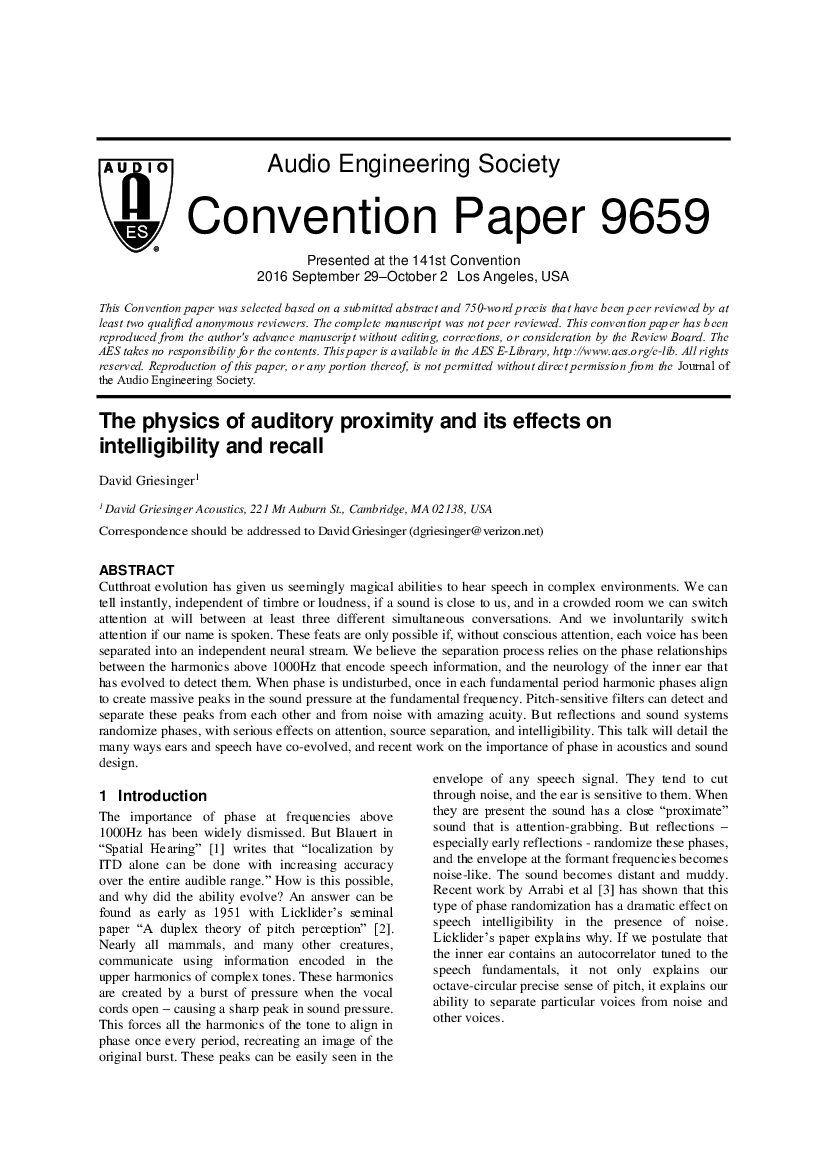Home / Publications / E-library page
You are currently logged in as an
Institutional Subscriber.
If you would like to logout,
please click on the button below.
Home / Publications / E-library page
Only AES members and Institutional Journal Subscribers can download
Cutthroat evolution has given us seemingly magical abilities to hear speech in complex environments. We can tell instantly, independent of timbre or loudness, if a sound is close to us, and in a crowded room we can switch attention at will between at least three different simultaneous conversations. And we involuntarily switch attention if our name is spoken. These feats are only possible if, without conscious attention, each voice has been separated into an independent neural stream. We believe the separation process relies on the phase relationships between the harmonics above 1000 Hz that encode speech information, and the neurology of the inner ear that has evolved to detect them. When phase is undisturbed, once in each fundamental period harmonic phases align to create massive peaks in the sound pressure at the fundamental frequency. Pitch-sensitive filters can detect and separate these peaks from each other and from noise with amazing acuity. But reflections and sound systems randomize phases, with serious effects on attention, source separation, and intelligibility. This talk will detail the many ways ears and speech have co-evolved, and recent work on the importance of phase in acoustics and sound design.
Author (s): Griesinger, David
Affiliation:
David Griesinger Acoustics, Cambridge, MA, USA
(See document for exact affiliation information.)
AES Convention: 141
Paper Number:9659
Publication Date:
2016-09-06
Import into BibTeX
Session subject:
Perception
Permalink: https://aes2.org/publications/elibrary-page/?id=18463
(460KB)
Click to purchase paper as a non-member or login as an AES member. If your company or school subscribes to the E-Library then switch to the institutional version. If you are not an AES member Join the AES. If you need to check your member status, login to the Member Portal.

Griesinger, David; 2016; The Physics of Auditory Proximity and its Effects on Intelligibility and Recall [PDF]; David Griesinger Acoustics, Cambridge, MA, USA; Paper 9659; Available from: https://aes2.org/publications/elibrary-page/?id=18463
Griesinger, David; The Physics of Auditory Proximity and its Effects on Intelligibility and Recall [PDF]; David Griesinger Acoustics, Cambridge, MA, USA; Paper 9659; 2016 Available: https://aes2.org/publications/elibrary-page/?id=18463